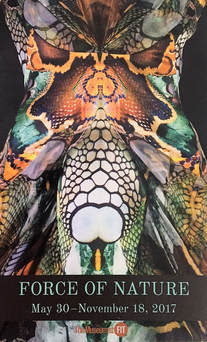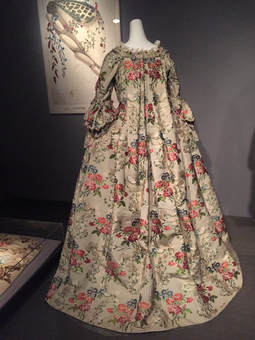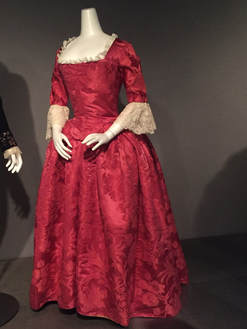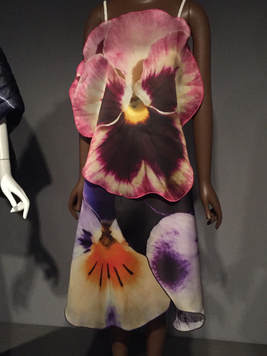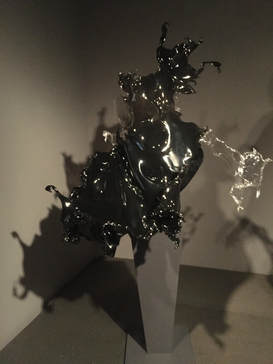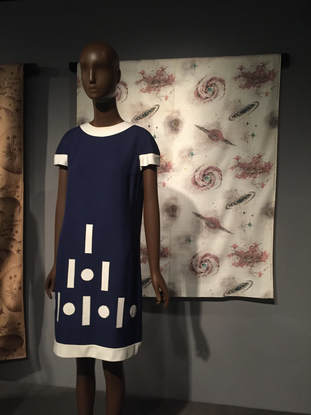|
8/10/2017 0 Comments Fashionista Scientista
By Robbin Koenig
Whether it’s cotton tee shirts or a pair of leopard-print leggings, fashion and science have been intertwined since people started to wear clothes. Even scientist, Sir George Darwin, son of naturalist Charles Darwin, compared the development of fashion to the adaptation of organisms and the theory of evolution in his 1872 article, Development of Dress: “A new invention bears a kind of analogy to a new variation in animals…those that are not really beneficial die away, and those that are really good become incorporated by "natural selection," as a new item in our system.” For instance, while modern hat wearers no longer regularly require free range of motion on the right side to wield a sword, that feather in your cap is placed on the left as a vestigial reconciliation between function and form. A new exhibit, “The Force of Nature”, further explores this relationship at The Museum at FIT in New York City. This free exhibit will be available to visitors May 30 - November 18, 2017. For those Scientistas unable to attend in person, we captured a few highlights to share with you. Read on to learn about the ways in which natural sciences and fractal geometry have been influencing fashion design since the 18th century, as well as the interconnection between fashion and the principles of nature. During the 18th century, European explorers visited distant foreign lands and returned with exotic plants, flowers, and creatures. Naturalists identified and investigated these new species, while the public developed a fascination with these strange and unfamiliar examples of nature. This public interest was reflected in the textiles and garments of the time. According to the exhibit’s didactic labels, botany was exclusively a man’s domain. However, it was acceptable for women to have an interest in gardening and therefore, gain knowledge about plants through active participation in this hobby. This is exemplified in an 18th-century garment created from silk damask with a fruit and floral pattern. The fabric was designed by Anna Maria Garthwaite, a prominent English designer with expertise in plant life. Flowers continued to inspire fashion designers throughout history. Christopher Kane’s silk gazar pansy dress draws an analogy between the flower, whose color is a result of genetic crossbreeding, and hybridizing traditional ideas to create new designs. Designer Iris Van Herpen mimics the movement and flow of water. Constructed from upholstery fabric for an airplane, this 1928 dress from France is an artistic representation of Georges Lemaître’s 1927 Big Bang Theory. Atomic particles are represented with vinyl appliqué on this Pierre Cardin dress. Plate tectonics are represented by Mary Katrantzou’s beaded, plated bodice surrounded by fluid silk. Iris Van Herpen and Jólan van der Wiel used magnetic fields to create these shoes from iron filings and resin. The FIT Museum display includes a variety of clothing and accessories inspired by animals’ physical appearance and behavior. The exhibit examines the fashion industry’s recognition of its environmental exploitation, resulting in detrimental consequences to wildlife and natural resources. However, attitudes are changing and designers, such as Stella McCartney, are trying to be part of the solution, rather than the cause of the problem. There is also a movement to create textiles from new biodegradable materials, such as spider silk and alginate. Stella McCartney created this dress from sustainably sourced viscose for her 2017 resort collection. So, Scientistas, what’s the evolutionary history behind your style? The Museum at FIT Seventh Avenue at 27th Street New York, NY 10001-5992’ 212-217-4558 
About the Author
Robbin Koenig, M.A., M.S. is an educator with an avid interest in technology and science education. She has taught students in prekindergarten through high school. Robbin enjoys volunteer work, exploring the N.Y.C. cultural arts scene, and anything pertaining to wildlife. Comments? Leave them below!
0 Comments
Your comment will be posted after it is approved.
Leave a Reply. |
LIFESTYLE BLOGRead our lifestyle advice, written exclusively for pre-professional women in science and engineering. From advice about fashion, work and family balance, self, wellness, and money, we've got you covered! |
The Scientista Foundation, Inc. All Rights Reserved © 2011-2021 | Based in NY | [email protected]
The Network for Pre-Professional Women in Science and Engineering
The Scientista Foundation is a registered 501(c)(3) -- Donate!
The Network for Pre-Professional Women in Science and Engineering
The Scientista Foundation is a registered 501(c)(3) -- Donate!

